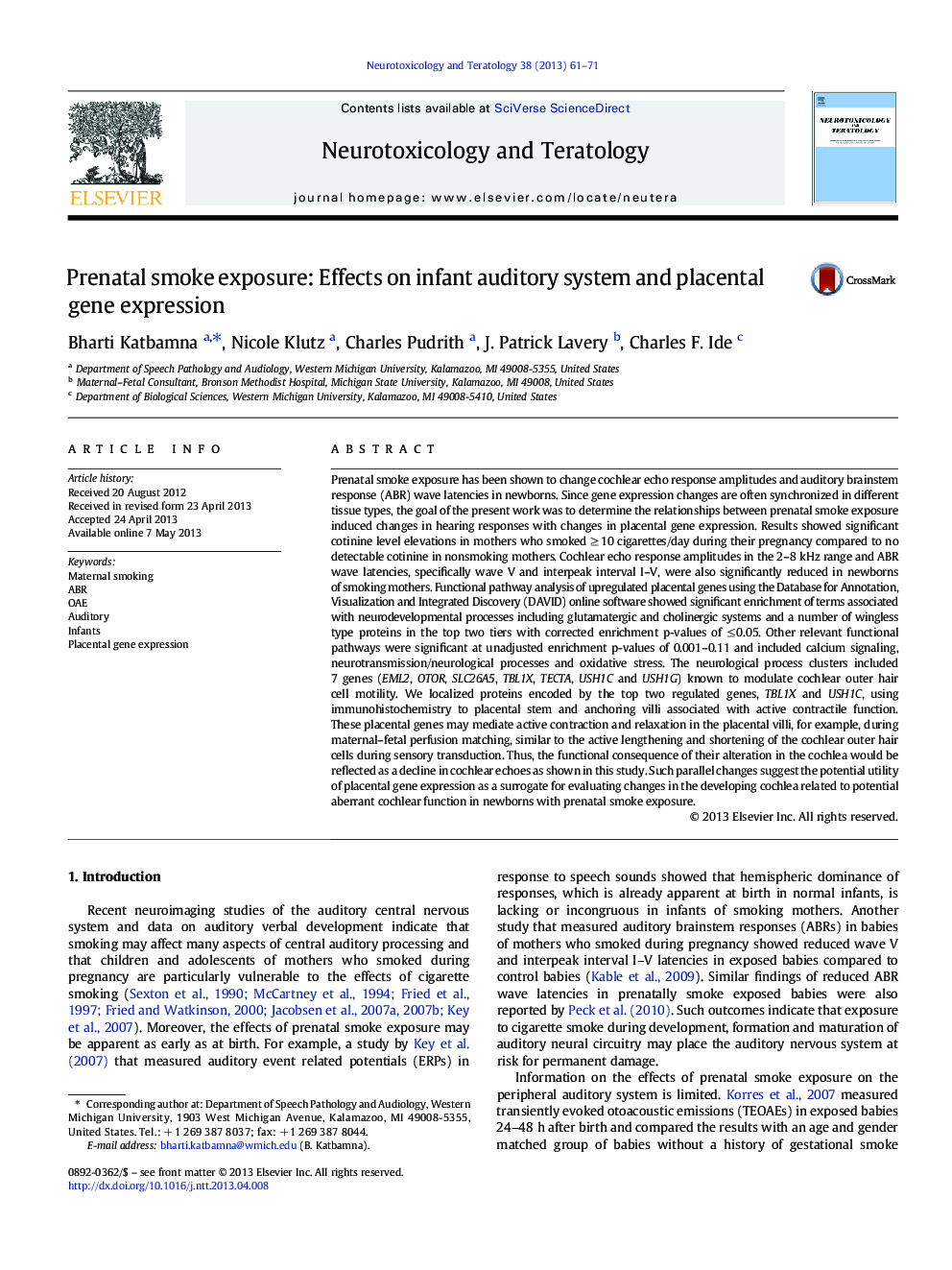| Article ID | Journal | Published Year | Pages | File Type |
|---|---|---|---|---|
| 2591304 | Neurotoxicology and Teratology | 2013 | 11 Pages |
•Prenatal smoke exposure influences cochlear and auditory brainstem functions.•It also alters placental gene expression implicating genes found in the cochlea.•Placental–cochlear cluster of genes bears functional similarity.•Thus, placental gene expression may serve as a surrogate for developing cochlea.
Prenatal smoke exposure has been shown to change cochlear echo response amplitudes and auditory brainstem response (ABR) wave latencies in newborns. Since gene expression changes are often synchronized in different tissue types, the goal of the present work was to determine the relationships between prenatal smoke exposure induced changes in hearing responses with changes in placental gene expression. Results showed significant cotinine level elevations in mothers who smoked ≥ 10 cigarettes/day during their pregnancy compared to no detectable cotinine in nonsmoking mothers. Cochlear echo response amplitudes in the 2–8 kHz range and ABR wave latencies, specifically wave V and interpeak interval I–V, were also significantly reduced in newborns of smoking mothers. Functional pathway analysis of upregulated placental genes using the Database for Annotation, Visualization and Integrated Discovery (DAVID) online software showed significant enrichment of terms associated with neurodevelopmental processes including glutamatergic and cholinergic systems and a number of wingless type proteins in the top two tiers with corrected enrichment p-values of ≤ 0.05. Other relevant functional pathways were significant at unadjusted enrichment p-values of 0.001–0.11 and included calcium signaling, neurotransmission/neurological processes and oxidative stress. The neurological process clusters included 7 genes (EML2, OTOR, SLC26A5, TBL1X, TECTA, USH1C and USH1G) known to modulate cochlear outer hair cell motility. We localized proteins encoded by the top two regulated genes, TBL1X and USH1C, using immunohistochemistry to placental stem and anchoring villi associated with active contractile function. These placental genes may mediate active contraction and relaxation in the placental villi, for example, during maternal–fetal perfusion matching, similar to the active lengthening and shortening of the cochlear outer hair cells during sensory transduction. Thus, the functional consequence of their alteration in the cochlea would be reflected as a decline in cochlear echoes as shown in this study. Such parallel changes suggest the potential utility of placental gene expression as a surrogate for evaluating changes in the developing cochlea related to potential aberrant cochlear function in newborns with prenatal smoke exposure.
